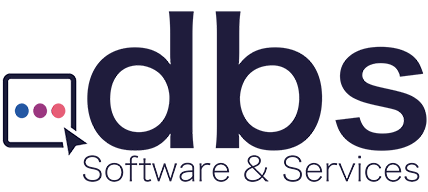
What is a document management system?
Although the name sounds quite obvious, there is a lot more behind the definition of a document management system than the name may imply.
If one were to ask “What is a computer?”, for example, you would find the answer changing with the times from a room-sized machine that could do arithmetic in the 1950s, to an ubiquitous palm-sized device in everyone’s pockets today.
Given the exponential rate of change of technology and technological systems, a definition conceived of last year, is likely quite inadequate today.
So, what is a document management system?
A document management system is a computer or cloud-based application that helps store, track and manage documents across an organization electronically.
This is perhaps the most parsimonious definition of a document management system possible. True, the technology did emerge to solve the inefficiencies of managing the ever increasing burden of paper-based documentation, which is error-prone and difficult to store, track, retrieve, and manage. But the definition is incomplete today because the utility of a document management system in businesses far exceeds what the definition suggests.
Firstly, a document management system isn’t just about managing documents. It enables managing all kinds of files within a single system. These include electronic files, pdfs, images, media files and more. Secondly, and perhaps more important is that its features and functionality go well beyond the tasks of storing, tracking and managing files.
What else does a document management system do?
Simply having all the files organized electronically, opens up a world of possibilities for an organization, apart from eliminating paper. And many of those possibilities are built right into a document management system. Let’s look at a few key features.
Workflow Automation
Once files are digitally captured and indexed, they can pass through workflows smoothly. Any repeatable routing of documents can be done automatically. Imagine a process where a form that needs to be captured, verified, approved, allocated and archived. The routing between each step is automatic and instantaneous. And the whole process can be logged, monitored and optimized.
Secure Sharing and Access Control
A document management system (DMS) allows files to be shared securely, both within the organization and with external parties like clients and vendors. Unlike simple emails, a DMS tightly controls the reach of a given document. You may choose to ensure that a file never leaves the organization’s host server if need be. That aside, the level of access and permissions to be granted can be set per person in the organization. You may allow the recipient of a shared document to either view, comment, edit, or see previous versions independently.
Real-time Collaboration
A DMS allows documents to flow seamlessly within departments across the organization.. This brings down the time required to complete tasks by small teams. An extremely useful feature whether your workforce is remote or in the same office.
Business Tools Integration
Many savvy managers consider a DMS as the base layer of an organization’s technology stack. Like the single source of truth for documents across the organization. As such, business tools like CRM and ERP applications can be connected to it with seamless integrations.
Audit Trails
A historical log of versions and actions by users is immutably maintained for every document. Which means audit trails of documents can be easily accessed, retrieved and reported. This reduces the burden of regulatory compliance by making the auditor’s job less onerous.
Chapter One in Digital Transformation 101
The features of a document management system don’t end there. From healthcare to education, from enterprises to government, many organizations have benefitted from overhauling their traditional processes with the power of document management systems. Businesses find the value of DMS driven optimization reflected significantly in their bottom lines. A significant decrease in managerial burden as a result, leads to intangible benefits like better operational agility, and improved decision making.
As leaders on the path to digital transformation know, a document management system is usually step one in the process.

dbs Software & Services (dbs) is a long-standing provider of document management and process automation solutions for education and business, and the exclusive provider of Tessi Docubase® in North America.
Tessi Docubase® is an enterprise-grade modular, secure, and easy-to-use document management system that seamlessly integrates with Business Information Systems. Its secure architecture and a broad range of features make it the perfect solution for a wide range of enterprises and use cases.
dbs LiveForms, is a low-code Business Process Automation platform. Its sole focus is simplifying complex processes by automating repetitive steps – from data capture to alerts, notifications, email confirmations, and everything in between quickly, without involving a programmer.
dbs eSign is a cloud-based electronic signature solution that allows users to manage the signing process for a document, from upload to signing and sealing, from any mobile device or computer.


Leave A Comment